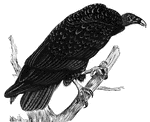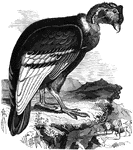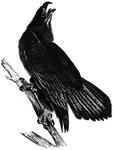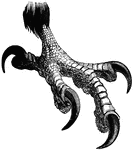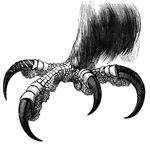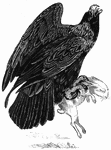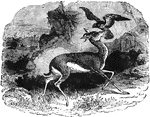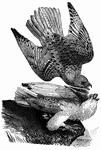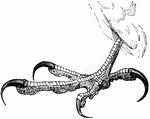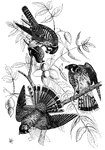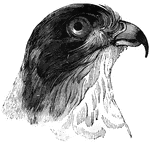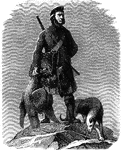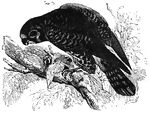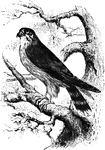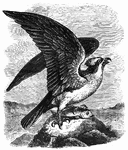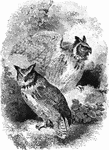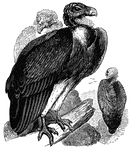Clipart tagged: ‘raptor’
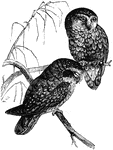
Athene Maculta
Athene maculta, which derive their name from the Greek goddess of wisdom, supposedly for their meditative…
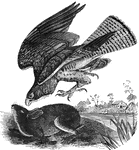
Common Buzzard of Europe
"B. vulgaris is twenty-two inches long, the head is large and the body heavy. Above, the color…
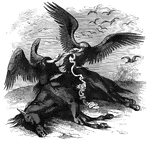
Turkey Buzzards
Genus Cathartes, found in the Americas, sometimes as far north as New England. These buzzards…
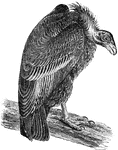
California Condor
"Pseudogryphus californianus. California Condor. Adult: Blackish, the feathers with browner tips or…
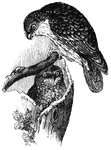
Athene conneviens
Athene conneviens, which derive their name from the Greek goddess of wisdom, supposedly for their meditative…
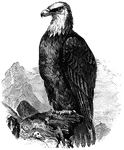
Bald Eagle
Bald (or white-headed) eagle, H. leucocephalus, common along sea-coasts, lakes, and rivers.

Bald Eagle
"Haliaetus leucocephalus. White-headed Sea Eagle. "Bald Eagle." "Bird of Washington". Adult: Dark brown;…
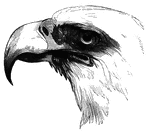
Head of a Bald Eagle
The head of a bald eagle. The distictive white plumage of this area earned it its nickname.
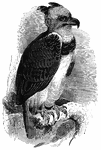
Harpy Eagle
Genus Harpyia, it is one of the largest, most fierce, and powerful eagles. It has a crest of…
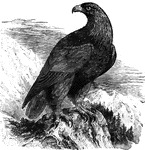
Royal Eagle
Also known as the common eagle of Europe, (A. fulvus) these large eagles nest on the inaccessable…
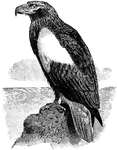
Steller's Sea Eagle
The Steller's Sea Eagle (Haliaeetus pelagicus) is a large bird of pray in the Accipitridae family of…
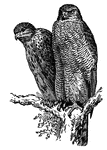
Goshawk
The Goshawk (Astur palumbarius) is a hawk abundant in the forest regions of northern Europe and Canada,…

Harrier Ear Parts
"Circinae. Harriers. Face surrounded with an incomplete ruff (as in most owls); orifice of ear about…

American Marsh Hawk
Also known as the American harrier, the marsh hawk (C. Hudsonius) is nineteen to twenty-one…
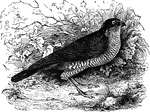
European Sparrowhawk
Resembles the American sparrow-hawk, feeding primarily on small birds and quadrupeds, as well as domesticated…
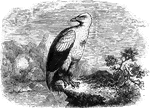
Vulture Hawk
Genus Gypohierax, is about the size of a goose, and is found in Western Africa, particularly…

Fork-Tailed Kite
"The fork-tailed kite, (N. furcatus) is twenty-five inches long; the wings and tail black;…

Red Kite Resting on a Branch by a Body of Water
"Milvus milvus, the Red Kite or Forked Tail Glead of the Old World, ranging from the Atlantic Islands-except,…
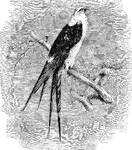
Swallow-tailed Kite
"Elanoides forficatus. Swallow-tailed Kite. Adult: Head, neck, band on rump, and entire under parts,…
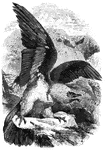
Lammergeyer
The lammergeyer (Swiss for "lamb-killer") is a member of the vulture family, but has a notably feathered…
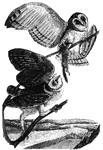
American Barn Owl
A pair of American barn-owls, one of which is grasping a small rodent in its claws.

Eagle Owl
Eagle or great-horned owl, found in Europe and northern asia. It feeds on hares, rabbits, moles, mice,…

Head of an Eagle Owl
Head of an eagle owl. It has large eyes for seeing at night, and a hooked beak for snaring its prey.
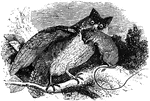
Scops-Eared Owl
A scops-eared owl feeding on a small rodent. It is common in Central and Southern Europe.
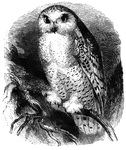
White Owl
The white owl (also known as the snowy or ermine owl), found in the colder latitudes of the world. Its…
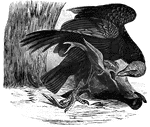
Black Vulture
Genus Coragyps, about the size of a small turkey. This one is feeding on a cow's head.
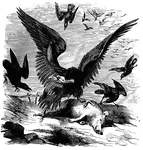
Black Vulture
Black vulture (or carrion crow), genus Coragyps, about the size of a small turkey. This group…

Brown Vulture
V. cinercus, native to the mountainous regions of Europe. It feeds exclusively on carrion.
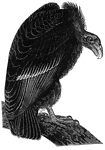
California Vulture
C. Californianus, a large species of vulture, found only on the western side of the Rocky Mountains,…
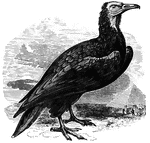
Egyptian Vulture
N. percnopterus, common to Africa, sometimes found in Southern Europe and in Asia. Males and…
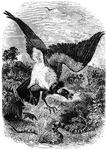
King Vulture
Genus sarcoramphus, a large vulture found in the tropical regions of the Americas, sometimes…
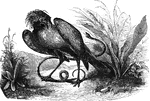
Secretary Vulture
G. serpentarius, known as the serpent vulture because it feeds on snakes. It has a distinctive…

Vultures
Genus Vulture, posess keen eyesight and a sense of smell for locating carcasses. Vultures feed…
